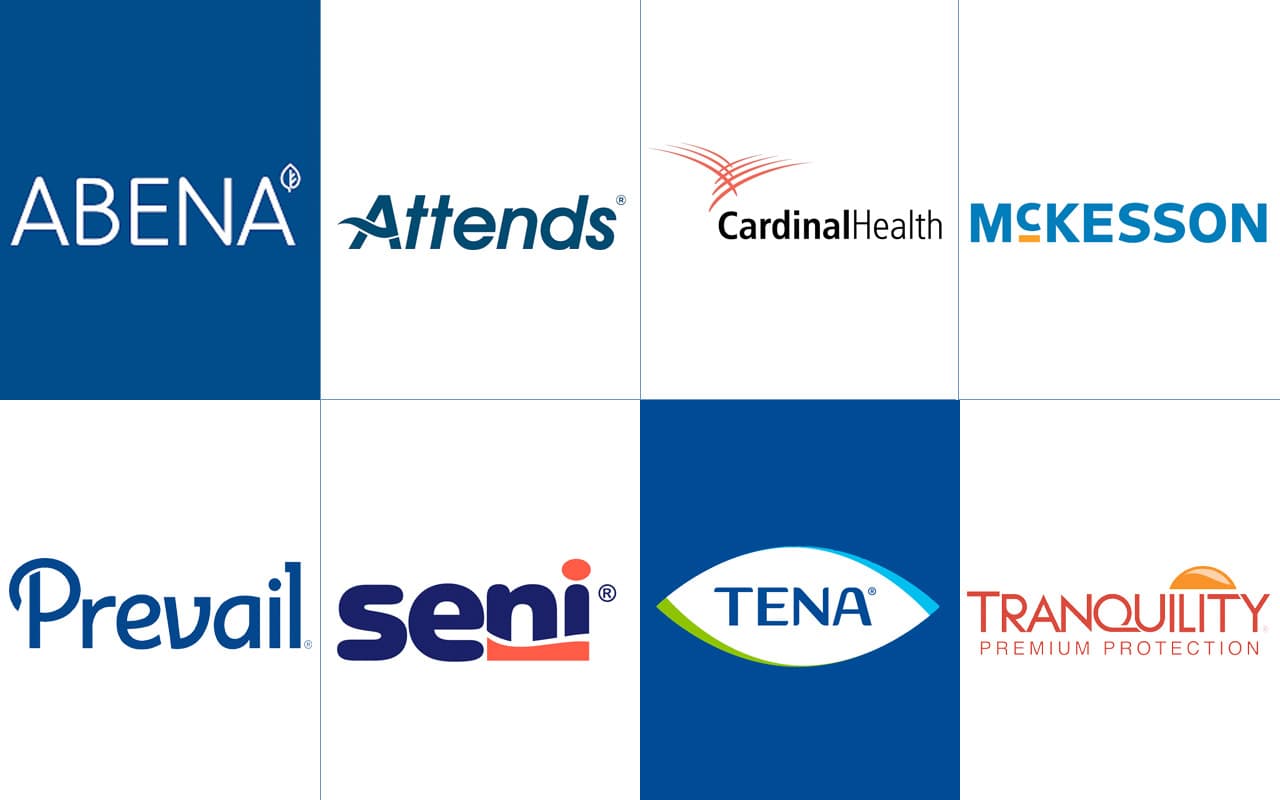When you’re managing incontinence, having the right information on hand can lead to fewer leaks, lower costs, and—most importantly—better health. When is it time to move from a pad to an adult diaper? Is more expensive better? How do you choose absorbency level? Read on for solutions to the most common mistakes adults make when managing incontinence.
1. Using an underpad instead of absorbent underwear.
Years ago, doctors thought underpads were better for health, because they allowed skin to more easily breathe. Now, there are many breathable incontinence products on the market that contain urine far more effectively without damaging skin.
If you’re experiencing true bladder leaks, you probably don’t want to use an underpad. When urine comes in contact with air, the pH is altered and it becomes highly alkaline, which is dangerous to skin. Since underpads don’t soak up as much urine as protective underwear, the urine is held against delicate skin, leading to breakdown, and in some cases pressure ulcers.
Aside from the skin problems, underpads can’t handle high volumes of urine, leading to more leaks and laundry than adult diapers.
2. Wearing a pad inside absorbent underwear for extra protection.
There’s a longstanding misconception that adding a pad to an adult diaper will increase absorbency. In reality, the opposite is true—plus, it can damage your skin.
Here’s what happens when you put a bladder pad inside a pull-up or tab-style diaper:
Bladder pads have a plastic backing that traps urine inside the pad. In other words, they’re designed so that urine doesn’t make it past the back of the pad.
When you put a pad inside an absorbent product, the urine gets trapped at that plastic backing and never makes it through to the protective underwear or tab-style brief. Instead, it’s pushed out the leg holes, leading to leaks.
The urine left inside the pad is held against delicate skin, leading to breakdown and damage.
Instead of putting a pad inside your underwear or brief, look for a higher absorbency underwear or brief. Higher absorbency products last longer, hold more liquid, and protect your skin.
If you still need more absorbency, try a booster pad instead. Booster pads don’t have a plastic backing, so moisture can pass through to the absorbent product beneath.
3. Wearing a tab-style adult diaper on top of a pull-up.
Just like bladder control pads, briefs and protective underwear have a plastic lining that stops incontinence from passing through. Stacking them on top of each other makes them less effective, and more likely to cause skin damage. Instead, find your exact waist and hip measurements so you get a good fit the first time.
4. Buying the highest absorbency available.
While some people need very high absorbency products, many shoppers automatically reach for the highest absorbency options for peace of mind.
These days, plenty of tab-style adult diapers and pull-ups for men and women are incredibly absorbent. You may think you need an overnight product, but a heavy-duty daytime option could be just fine.
While using a product that’s more absorbent than you need poses no danger to your skin or health, it may pose a danger to your wallet. You can save a lot of money by trying out a lower absorbency option, then working your way up if you need to.
Bonus: Lower absorbency products tend to be less bulky and more comfortable, leading to increased range of motion when it comes to exercising and general flexibility.
5. Choosing the cheapest option to save money.
If you’re on a tight budget, it can be tempting to go with the cheapest options. For those with truly heavy incontinence, though, cheap products tend to be much more expensive in the long run.
Think about it this way. If you have eight voids a day, a cheaper product may hold one or two before you need to change, whereas a more expensive product could hold up to ten. If you buy the cheaper product, you’re going to have to use at least four briefs. If you’d chosen the expensive product, you’d only need one. Though that second product had a higher initial price tag, you’ll use fewer of them, saving you money in the long run.
And don’t forget that incontinence products are qualified medical expenses according to the IRS, so break out your HSA card at checkout if you participate in an employer plan!
Recommended reading: Learn more about adult diapers on our Adult Diaper Guide Page!


